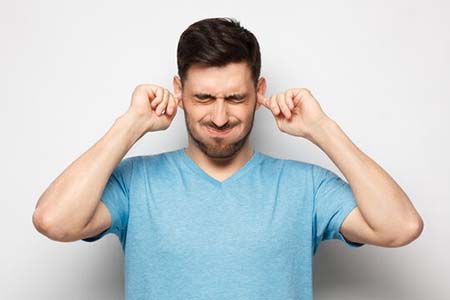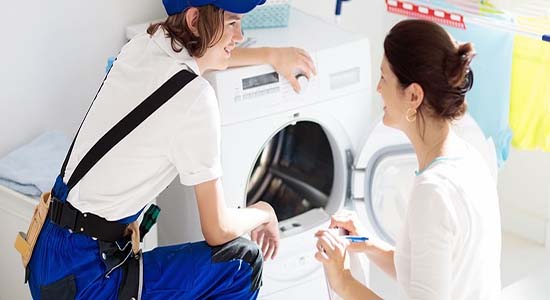This article serves as your guide to understanding, preventing, and eliminating mold in your dishwasher. Our goal is to help you maintain a clean and hygienic kitchen environment, ensuring your dishes are not only sparkling but also safe for your family. Join us on this journey to discover effective strategies for a cleaner, healthier home.

Common Causes of Loud Dryer Noises
If your dryer is making unusual or loud noises during operation, it’s essential to identify the underlying causes. Here are some common culprits:
1. Worn or Damaged Dryer Belt
Signs:
- Squeaking, thumping, or squealing noises during dryer operation.
- Visible cracks, fraying, or breakage in the dryer belt.
2. Malfunctioning Drum Support Rollers
Signs:
- Rumbling or rumbling noises, especially when the dryer drum rotates.
- Drum movement that feels uneven or unstable.
- Visible flat spots or misalignment on the drum support rollers.
3. Loose or Worn Idler Pulley
Signs:
- Screeching or squealing sounds during the drying cycle.
- Excessive slack or looseness in the dryer belt.
- Belt rubbing or slipping against the idler pulley.
4. Debris in the Dryer Drum Seal
Signs:
- Annoying scraping or rubbing noises when the drum rotates.
- Drum seal visibly obstructed by lint, debris, or foreign objects.
5. Faulty Blower Wheel
Signs:
- High-pitched whining or squealing sounds while the dryer is running.
- Unbalanced or damaged blower wheel.
6. Loose or Damaged Dryer Drum
Signs:
- Clanging or thudding noises coming from the dryer drum.
- Drum movement that feels loose or unstable.
- Possible causes include worn drum support rollers, a damaged drum, or loose components.
Safety Precautions to Follow:
- Disconnect the Power: To initiate the process, it is necessary to first disconnect the power by either unplugging the dryer from the electrical outlet or deactivating the circuit breaker. In the case of a gas-powered dryer, it is also important to turn off the gas supply.
- Wear Safety Gear: Safety goggles are essential to protect your eyes from debris, dust, or any sharp edges inside the dryer. Additionally, wearing gloves will safeguard your hands.
- Work in a Well-Ventilated Area: Adequate ventilation helps dissipate any fumes or odors that may be present when working on the dryer.
- Secure the Dryer: Before beginning any work, ensure that the dryer is on a stable surface and won’t tip over while you’re working on it.
- Use Caution Around Moving Parts: Be cautious when working near moving parts like the drum or blower wheel. Avoid placing your hands or tools near these components while the dryer is running.
- Consult the User Manual: Your dryer’s user manual can provide specific safety instructions and diagrams for your particular model. Refer to it if you’re unsure about any aspect of the repair.
Upon identifying the source of the noise during your diagnostic process, it’s time to take the appropriate actions to resolve the problem:
Step-by-Step Diagnosis

- Worn or Damaged Dryer Belt: If you observed signs of wear, cracks, or fraying in the dryer belt, it’s crucial to replace it. A new belt will ensure the drum rotates smoothly without producing unnecessary noise.
- Malfunctioning Drum Support Rollers: When you discover flat spots, misalignment, or wear in the drum support rollers, it is recommended that you replace them. Replacing the rollers with new ones will assist in maintaining a balanced rotation of the drum, which in turn will reduce any rumbling noises.
- Loose or Worn Idler Pulley: For a loose or worn idler pulley, tightening or replacing it is the solution. This will ensure proper tension on the dryer belt, preventing screeching sounds.
- Debris in the Drum Seal: If debris is causing scraping noises in the drum seal, clean it thoroughly to eliminate the foreign objects. A clean seal will promote smooth and noise-free drum rotation.
- Faulty Blower Wheel: Address a faulty blower wheel by either cleaning or replacing it, depending on its condition. A well-balanced blower wheel is essential to prevent high-pitched whining sounds.
- Loose or Damaged Dryer Drum: Tightening or replacing the idler pulley is the solution for a loose or worn one. This will guarantee that the dryer belt has the right tension, thus preventing any screeching sounds.
By taking these steps and addressing the identified issue, you can significantly reduce or completely eliminate the noise coming from your dryer.
Solutions and Repairs
Now that you’ve successfully diagnosed the source of the noise in your dryer, it’s time to implement the necessary solutions and repairs. Here are step-by-step instructions for addressing each common issue:
Disconnect the Power: Always start by unplugging the dryer from the electrical outlet or turning off the circuit breaker. If your dryer is gas-powered, turn off the gas supply as well.
1. Replacing a Worn or Damaged Dryer Belt:
- When necessary, you can access the cabinet or rear panel of the dryer.
- Loosen the tension on the previous belt by shifting the idler pulley in the opposite direction of the motor pulley.
- Gently glide the previous belt away from the drum and the pulley attached to the motor.
- Loop the new dryer belt around both the drum and motor pulley in order to install it.
- Move the idler pulley back into position to restore tension on the belt.
- Reconstruct the dryer and reconnect it to the power source.
2. Fixing Malfunctioning Drum Support Rollers:
- Remove the front or rear panel of the dryer to gain access to the drum support rollers.
- Take out the rollers that are worn out or damaged by loosening any holding clips or bolts.
- Install the new drum support rollers in their place.
- Reassemble the dryer and plug it back in.
3. Tightening or Replacing a Loose Idler Pulley:
- Accessing the idler pulley is usually done in close proximity to the motor.
- If the idler pulley happens to be loose, you should proceed to tighten any retaining bolts or screws.
- If the idler pulley is worn out or damaged, it should be replaced with a brand new one.
- Reassemble the dryer and plug it back in.
4. Cleaning or Replacing the Drum Seal:
- Inspect the drum seal for debris or foreign objects by opening the dryer door.
- Remove any obstacles from the seal with caution.
- Clean the seal thoroughly using a moistened cloth to guarantee that it is completely clear of any dirt or particles.
- Reassemble the dryer and plug it back in.
5. Repairing or Replacing a Faulty Blower Wheel:
- Accessing the blower wheel is typically done by locating it at the front or rear of the dryer.
- Clean the blower wheel thoroughly to remove any debris or obstructions.
- If the blower wheel has been damaged or is not properly balanced, it should be replaced with a brand new one.
- Reassemble the dryer and plug it back in.
6. Repairing or Replacing a Loose or Damaged Dryer Drum:
- Remove the front or rear panel to gain access to the dryer drum.
- Inspect the drum, drum support rollers, and associated components for damage.
- Replace any damaged parts, including the drum if necessary.
- Reassemble the dryer and plug it back in.